Playing dodge ‘em through traffic: Bad traffic did not define Karachi in the past
Resident recalls the time commuters followed traffic rules and there was order on the roads.
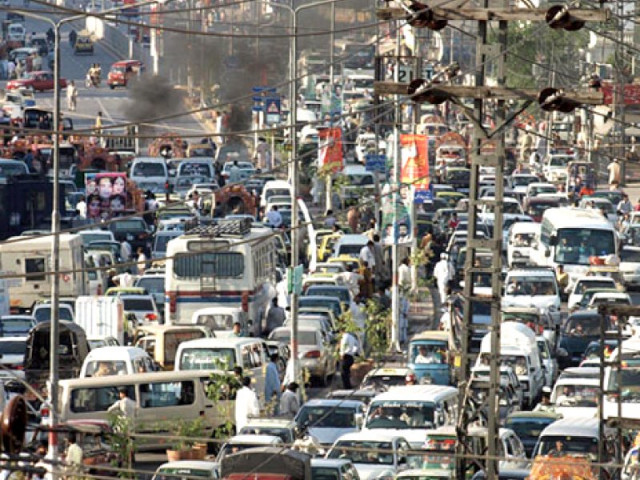
Today, Karachi’s traffic is chaotic. There are no rules, systems, any regulator or an implementer. Motorcyclists are an absolutely fearless breed. Helmet is a far cry. You can see families of five to six, ranging from an infant sitting on his mother’s lap, a toddler on the fuel tank, one hanging behind the mother and another one or two tucked somewhere in between. PHOTO: FILE
In the good old days, residents of Karachi used to brag about the systematic and organised traffic flow. In the 60s and the 70s, the honking of horn was considered a crime. ‘STOP’ signs brought vehicles to a halt on crossings and entry routes into the main roads. Traffic police used standard hand gestures to regulate traffic. Buses would stop at designated stops alongside pavements.
More than 12 persons standing on a bus would be fined. Auto-rickshaw drivers would not accept more than two passengers and black-and-yellow taxis were restricted to four passengers only. Taxi stands were used to park taxis only. All public transport drivers wore khaki uniforms and had round metallic badges with unique numbers hanging on their chests. All camel, horse and donkey carts had registration numbers conspicuously painted and inspectors of the Society for Prevention of Cruelty to Animals were seen on duty. The younger generation might not believe this, but it is true.
Today, Karachi’s traffic is chaotic. There are no rules, systems, any regulator or an implementer. Motorcyclists are an absolutely fearless breed. Helmet is a far cry. You can see families of five to six, ranging from an infant sitting on his mother’s lap, a toddler on the fuel tank, one hanging behind the mother and another one or two tucked somewhere in between. Speeding to the centre of the road and then shooting across the moving traffic on the spur of the moment is a thrill many motorcyclists enjoy. Why does it all happen? There is no checking in the real sense. Rickshaws are another menace that adds to the rumpus. The mechanical tonga, the Qingqi courtesy of China, has increased the passenger capacity to six adults on proper seats and one on the jump seat.
The mini buses create scenes of Spanish bull race on Karachi roads, every day. Broken windows, missing panes, hanging bumpers, painted rear screens to provide pardah are common. At times there are no head lights and generally no tail lights. The conductors are whistling while passengers are stuffed in like beans and the acrobatic ones are seen climbing up to the ‘farshi’ seats on the top.
Buses plying on city routes are few but old. New buses were introduced periodically by the public sector but somehow they vanished. Only a few privately owned ones have the resilience to operate. They stop anywhere and everywhere, and do not mind waiting for passengers right after crossing a signal or even in the middle of a crossing or around the twisted pole with three colourful lights operating as a traffic signal.
Over the years, the number of privately-owned cars has increased manifold. People with no license, impaired vision, poor reflexes or underage youth are all sitting behind the steering wheel. Cars they drive do not meet the necessary safety standards either. To accommodate the increased traffic, the administration took the “wise” step of widening the roads at the cost of pavements. The old city had footpaths that could accommodate 10 to 15 persons walking abreast. Half of the footpaths are encroached upon by vendors and the other half has been given to the roads.
Have the rules changed? No! Has the RTA been abolished? No! Has the traffic police been deputed on security duties? Certainly not. Drivers are surely at fault, but has anybody thought about why the same drivers behave in a civilised manner when they land in a Gulf city. Is it the two-hour flight that changes their mind? Are they given any refreshers on-board? No! It is the fear of law. The reason for chaos in Karachi is the declining quality of manpower in the government departments and the lack of commitment at the administration and government level.
The writer is a resident of Darakhshan Villas in DHA
To fix traffic woes, here’s what we can do:
Ten half-to-one kilometer-long model sections with check posts at the end should be set up on the city’s main arteries, such as Rashid Minhas, Shaheed-e-Millat, Sharae Faisal, and others. For one month, scouts, police and Rangers should stop every vehicle to hand over a pamphlet to drivers to ensure that from a fixed date onwards they will observe all rules while passing through this model road.
The administration should immediately start the Karachi Circular Railway and the Metro Bus project to reduce traffic on roads.
Getting rid of beggars and patharas from pavements, availability of proper parking along roadsides and ensuring that bus passengers get on and off at designated stops.
Smoke and noise pollution will take time but visual pollution can be controlled immediately. All walls with political slogans, Kala Jadoo advertisements, Hakeem and Sanyasi Baba claims should be painted over. All buses and taxis should be asked to follow standard colour schemes. Vehicles with dents, missing fenders, missing bumpers or missing lights and windows should not be allowed to ply on roads.
Published in The Express Tribune, August 23rd, 2013.
Published in The Express Tribune, August 23rd, 2013.

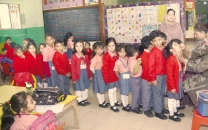

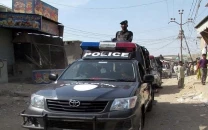
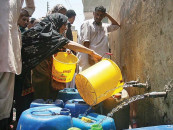
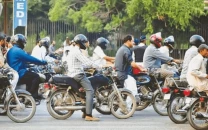
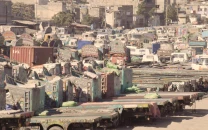












COMMENTS
Comments are moderated and generally will be posted if they are on-topic and not abusive.
For more information, please see our Comments FAQ